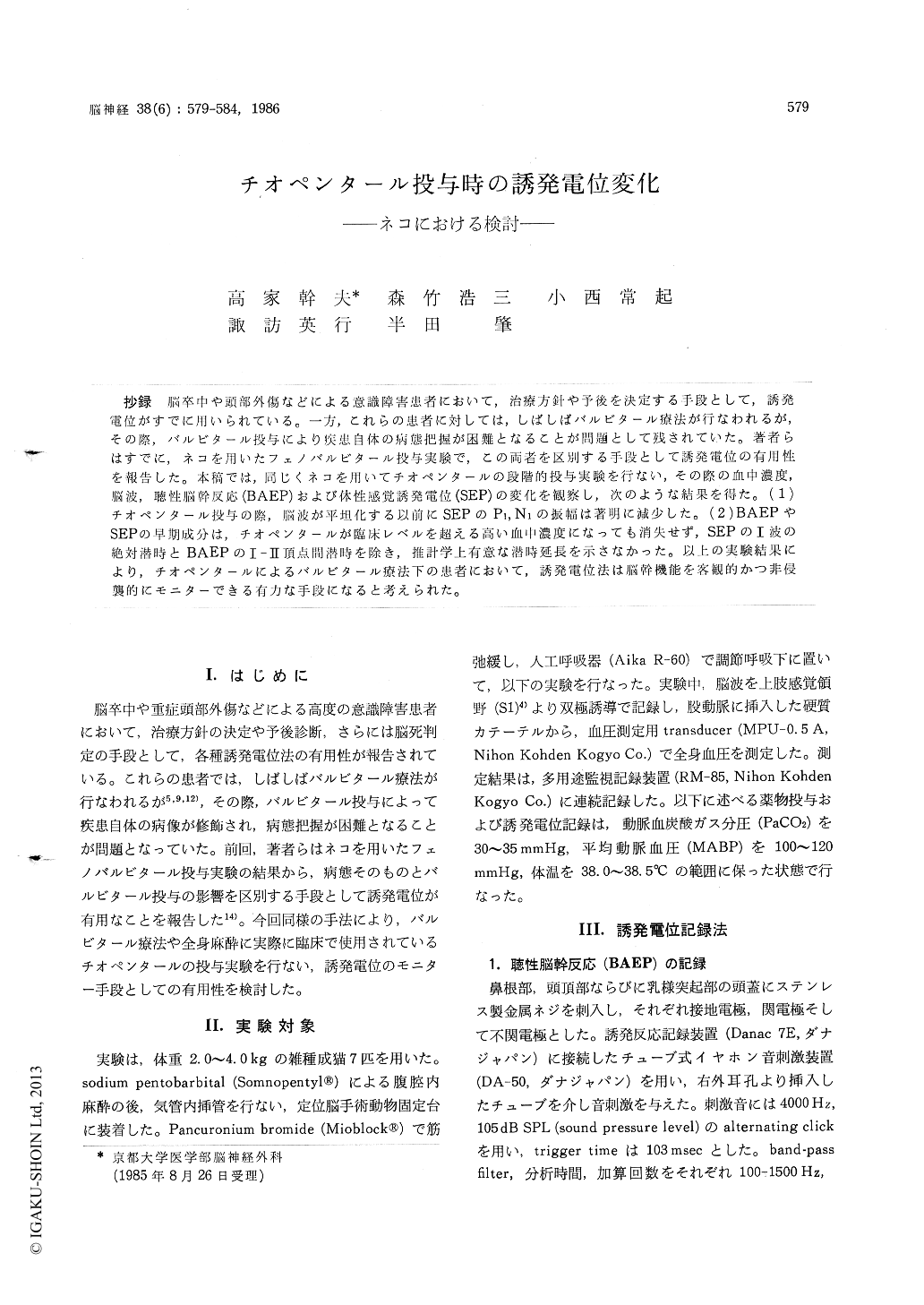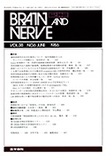Japanese
English
- 有料閲覧
- Abstract 文献概要
- 1ページ目 Look Inside
抄録 脳卒中や頭部外傷などによる意識障害患者において,治療方針や予後を決定する手段として,誘発電位がすでに用いられている。一方,これらの患者に対しては,しばしばバルビタール療法が行なわれるが,その際,バルビタール投与により疾患自体の病態把握が困難となることが問題として残されていた。著者らはすでに,ネコを用いたフェノバルビタール投与実験で,この両者を区別する手段として誘発電位の有用性を報告した。本稿では,同じくネコを用いてチオペンタールの段階的投与実験を行ない,その際の血中濃度,脳波,聴性脳幹反応(BAEP)および体性感覚誘発電位(SEP)の変化を観察し,次のような結果を得た。(1)チオペンタール投与の際,脳波が平坦化する以前にSEPのP1,N1の振幅は著明に減少した。(2) BAEPやSEPの早期成分は,チオペンタールが臨床レベルを超える高い血中濃度になっても消失せず,SEPのI波の絶対潜時とBAEPのI-II頂点間潜時を除き,推計学上有意な潜時延長を示さなかった。以上の実験結果により,チオペンタールによるバルビタール療法下の患者において,誘発電位法は脳幹機能を客観的かつ非侵襲的にモニターできる有力な手段になると考えられた。
Noninvasive electrophysiological evaluation with sensory evoked potentials would be of clear diag-nostic and prognostic value in evaluating coma-tose patients with stroke or severe head injury.
In order to protect the brain from such kinds of insults, barbiturate coma therapy has been em-ployed and its effectiveness has been already esta-blished. However, in the barbiturate coma therapy, it is occasionally difficult to distinguish the phar-macological effect of barbiturate from the preexist-ing brain dysfunction caused by the underlying process of the disease.
In adult cats, authors studied changes of sensory evoked potentials following cumulative intravenous administration of thiopental which is used cli-nically for barbiturate coma therapy. P1 and N1 of cortical SEP showed tendency of gradual de-crease in amplitude. However, no significant chan-ges occurred in latency by stepwise increment of thiopental dose. Changes in amplitude of P1 and N1 of cortical SEP preceded to the flattening on electroencephalogram. Around at the level of the concentration where EEG changes began, I-II interpeak latency of BAEP and latency of wave I of short latency SEP started to increase. BAEP and early components of SEP (I・II・III・IV) per-sisted even in by far the higher level of serum concentration of thiopental than that of clinical use. Furthermore, most of these parameters showed no statistically significant change neither in ampli-tude nor in latency.
These experimental results suggest that sensory evoked potentials will provide us with useful in-formation in the assessment of the brainstem function in patients under thiopental induced deep coma.

Copyright © 1986, Igaku-Shoin Ltd. All rights reserved.


